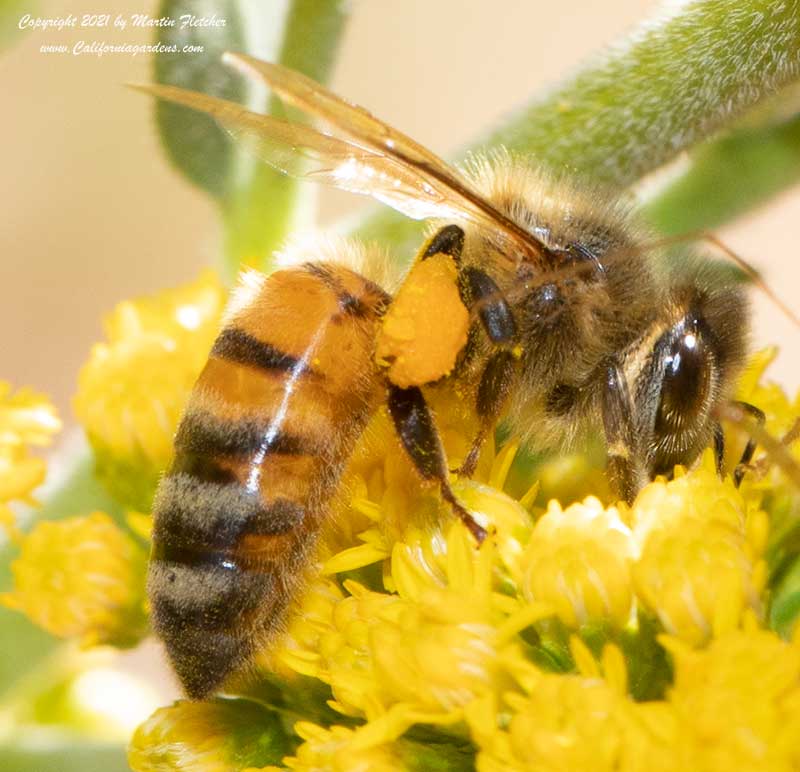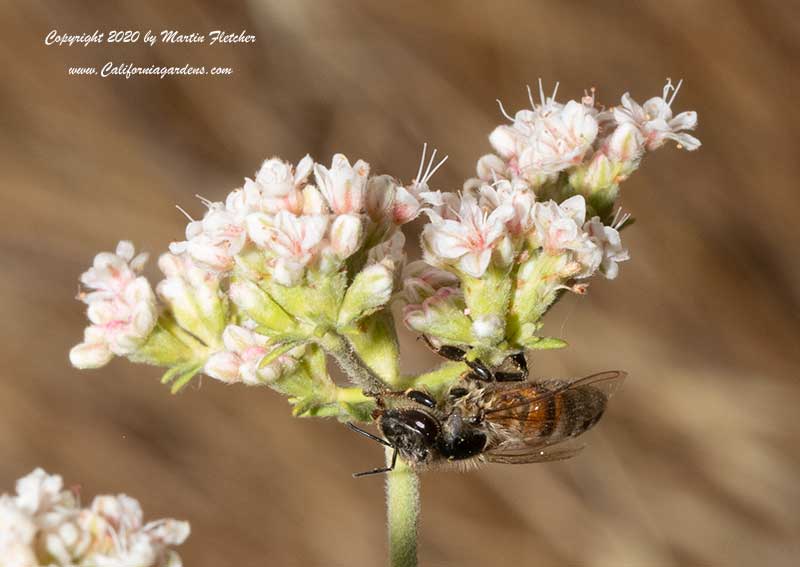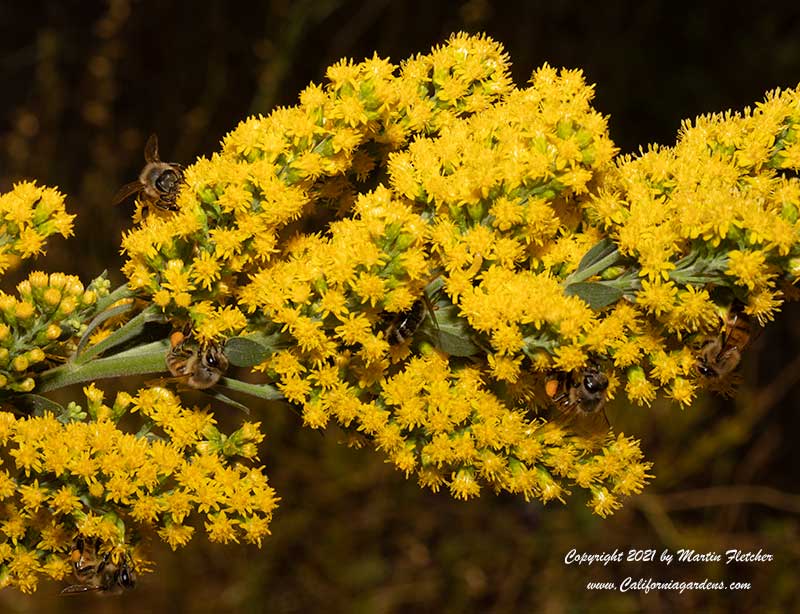Honey Bees - Apis mellifera
Honey Bees have been crucial for agriculture. They are valued as much or more because their hives can be moved about to intensively pollinate crops, such as almonds, peaches, and citrus, than for the honey production itself. There are a number of plants that strongly attract bees including rosemary, nepeta, lippia, Matilija Poppy, and the California Goldenrod featured in the photos. My favorite honey comes from our California Native Sage plants, Salvia mellifera, Salvia apiana and Salvia leucophylla. Bees will fly as much as 5 miles to find nectar, though typically far less if they can find food closer to home.

Honey Bee with full pollen basket on California Goldenrod. High resolution photos are part of our garden image collection.
Honeybee populations are threatened by Varroa and tracheal mites. Aspergillus flavus and Acosphaera apis, two kinds of fungus. Streptocarpus pluton a kind of bacterium and Africanized bees. With more and more insecticides being systemic, or being taken up by the plant and incorporated into the plant tissue, and the creation of ever more insidious insect toxins being introduced to the genetic code of our food plants is hardly a good thing from a bee's perspective, nor likely our's. A new disease called Colony Collapse Disorder has been linked to the Israeli Acute Paralysis Virus. Hives that are commercially tended seem to be much more likely to get the disease. This may in part be due to the frequent stress caused by the moving of the hives as well as the increasing pervasiveness of these environmental toxins. The virus seems to reduce the capability of the immune systems in the bees making them susceptible to many other diseases and in many cases just messing their little bee minds up enough that they can't find their way home.
The Africanized bees may actually help the honey bee become more hardy but they have quite a temperamental streak that does not seem to have become diluted much as the Africanized bees interbreed with the tamer honey bees. The Africanized bees have moved into Southern California and are at least as far north as Santa Barbara on the coast, Tulare County in the central valley and well into the Owens Valley. Caution should be taken with wild hives. The Africanized bees can not be differentiated from their tamer brethren without a dissecting scope even if you knew what you were looking for, except possibly by the vigor of the humming around the hive. It is not just that each individual bee gets mad more easily, and they aren't any more poisonous, but they communicate their displeasure to their cohorts and sting in mass. Looking for the good side in this they seem to be much more productive pollinators.
A lot of native bees including mason bees, flies that mimic bees, and butterflies are also great pollinators. As the honey bee population has declined the other native bee's and insects have increased their presence in our gardens. There is plenty of food out there for them and they are taking advantage of it. This doesn't help the commercial grower much, as many of the orchards need intensive pollination, are often far removed from wild-lands or even diverse landscapes, and require pollination at during a cold part of the year when many insects don't fly much. Much of the year a commercial agricultural planting is not an insect friendly place. Might this be a call for a return to the hedgerow or an inter-planting concept instead of a mono-crop approach? And maybe a call for a few less insecticides?
Fruitless Fall is an excellent book chronicling the bee's circumstance in great detail. The greatest hope for the honey bee may come from the diverse plantings in residential gardens as well as from the native plants. Bees like the rest of us seem to be much healthier on a varied diet. From a gardening standpoint, lots of flowers all of the time sounds like a great garden to me, and the bees think so too.
One last, thought . . . . lavender honey ice cream . . . might just want to keep a few of the bees around for this alone. High resolution photos of Honey Bees are part of our garden image collection.

Honey Bee upside down on pink California Buckwheat, Eriogonum fasciculatum flowers. High resolution photos are part of our garden image collection.

Honey Bees are collecting pollen from the late blooming California Goldenrod. High resolution photos are part of our garden image collection.
